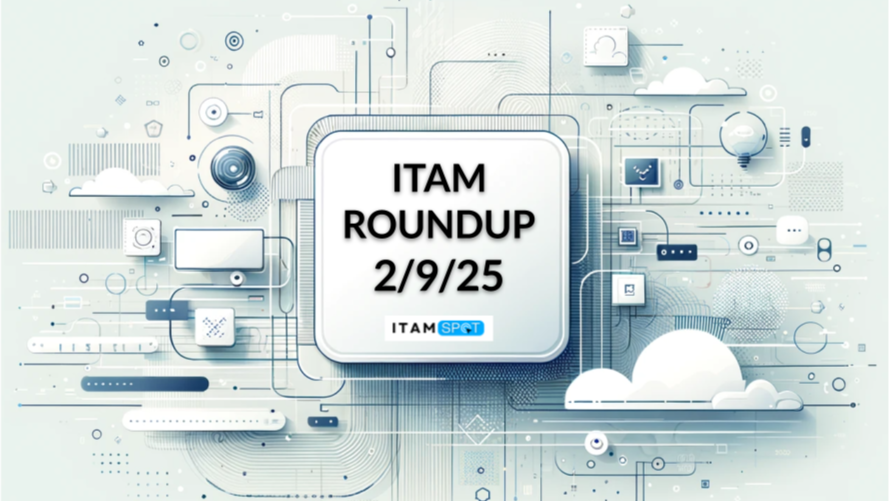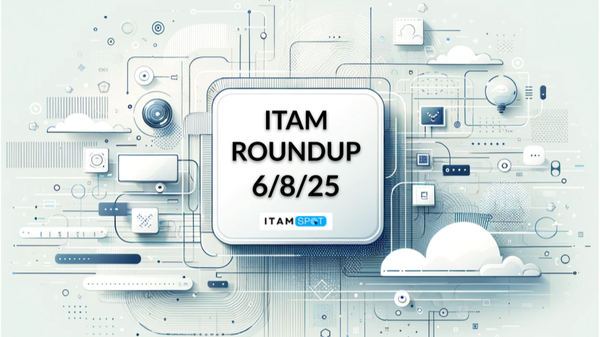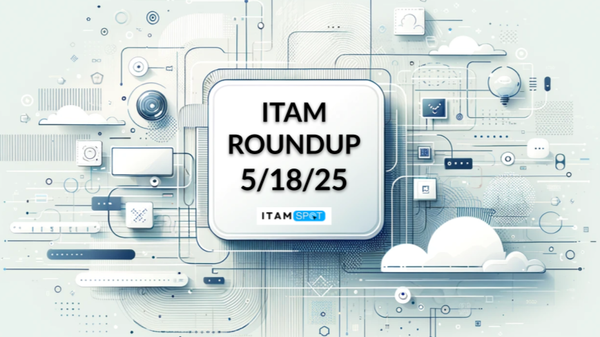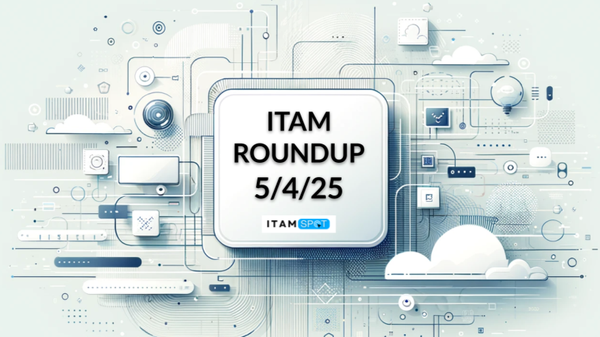The ITAM Roundup: 2/9/25

📰 News
The Evolving Role of ITAM: From License Management to Strategic Optimization
IT Asset Management has evolved beyond traditional license tracking to play a critical role in cloud cost management, cybersecurity, and compliance, particularly as businesses adopt AI and cloud-based services. The complexity of modern licensing, exemplified by Oracle’s Java pricing changes, requires ITAM professionals to proactively assess cost, security, and compliance risks while collaborating with other departments. As IT environments grow more complex, ITAM teams must develop strategic expertise across multiple domains to optimize assets, mitigate risks, and provide greater business value beyond cost control.

2025 IT Market Predictions: Generative AI, Technical Debt, and Federal Policy Impact
In 2025, IT leaders must navigate major shifts driven by Generative AI, rising technical debt, and federal policy changes. AI adoption is improving efficiency and reducing service demand for systems integrators, while organizations face urgent software upgrades and cybersecurity risks, with AI offering potential solutions. Meanwhile, federal policies—including tariffs, spending cuts, and visa changes—will reshape IT vendor strategies, requiring businesses to reassess contracts, leverage market insights, and prepare for increased competition.

SoftBank reportedly getting close to acquiring chipmaker Ampere in $6.5B deal
SoftBank is reportedly close to acquiring chipmaker Ampere Computing in a $6.5 billion deal, which would strengthen its position in the semiconductor industry, particularly in cloud computing and AI. If completed, the acquisition would allow SoftBank and its majority-owned Arm Holdings to integrate Ampere’s energy-efficient processors with Arm’s architecture, enhancing competition with Intel and AMD. Additionally, SoftBank may encourage Ampere to collaborate with its AI chip company Graphcore, potentially creating a powerful server market offering combining Ampere CPUs and Graphcore’s AI processors.

Sovereign Cloud: redefining the future of secure digital innovation
Sovereign cloud is emerging as a crucial solution for balancing data security, national sovereignty, and digital innovation in an increasingly AI-driven world. By adopting sovereign cloud frameworks, organizations can align with regulatory requirements, ensure data privacy, and foster trust while enabling interoperability and collaboration across regions. To succeed, Cloud Service Providers must define clear sovereignty goals, adopt flexible strategies to adapt to evolving regulations, and build strategic partnerships to drive innovation and long-term digital growth.

Amazon-backed X-energy bags $700M more for itty-bitty nuke reactors that don't exist yet
X-energy, a modular nuclear startup backed by Amazon, has secured an additional $700 million in funding to develop its unproven small modular reactor (SMR) technology, with plans to deploy reactors across the U.S. by 2039. The company is working on regulatory approvals, a fuel fabrication facility in Oak Ridge, Tennessee, and a partnership with Dow to build its first Xe-100 power plant in Texas. Despite significant funding and interest from tech firms seeking alternative energy sources, no commercial SMRs are currently operational in the U.S., and X-energy has yet to produce a working reactor.

📖 Tips
Complete guide to licensing Amazon Web Services (AWS)
AWS is a leading cloud computing platform that provides a wide range of services, including computing, storage, databases, and analytics, with flexible pricing models like On-Demand, Reserved Instances, and Savings Plans. Optimizing AWS usage requires implementing FinOps practices, leveraging AWS tools for cost efficiency, and understanding licensing considerations for Microsoft, Oracle, and SAP workloads. AWS supports hybrid and multi-cloud strategies through services like AWS Outposts and VMware Cloud on AWS, while also offering various support plans to accommodate businesses of different sizes.

The FinOps playbook for AI: Optimizing costs and performance
As AI adoption grows, businesses must implement FinOps strategies to manage rising costs across compute, storage, and cloud services while maintaining financial transparency. Optimizing AI infrastructure through right-sizing resources, improving data practices, and evaluating cloud vs. on-prem solutions helps control expenses without stifling innovation. By defining clear success metrics and aligning AI investments with business objectives, organizations can ensure AI remains a driver of growth rather than an unchecked cost center.

Why GreenOps will succeed where FinOps is failing
FinOps is failing due to its short-term focus on cost-cutting, lack of cross-functional collaboration, and failure to engage engineers in optimizing cloud resources, leading to inefficiencies and unsustainable growth. GreenOps, by integrating sustainability with cost efficiency, motivates engineers through environmental responsibility, fosters cross-functional collaboration, and promotes long-term, holistic decision-making. By combining GreenOps with enterprise architecture and transformational leadership, organizations can build sustainable, efficient cloud systems that align financial, operational, and ecological goals, ensuring long-term success.

Everything is better as code: Using FinOps to manage cloud costs
FinOps as Code (FaC) integrates financial management directly into the engineering workflow, automating cost optimization and governance to reduce cloud waste—potentially unlocking $120 billion in value. By embedding policies into infrastructure provisioning and using automation to enforce cost efficiency, FaC helps engineers make real-time cost-conscious decisions, reducing disruptions and improving resource allocation. Successful adoption requires specialized tools, clear policy frameworks, and effective change management to ensure smooth implementation and long-term financial accountability in cloud operations.

🐛Bugs & Exploits
Microsoft's final Exchange Server 2019 update still missing as support deadline ticks down
Microsoft has delayed the release of Cumulative Update 15 (CU15) for Exchange Server 2019, which was initially pushed from December to January but remains unavailable as of February. The update is crucial for organizations transitioning to Exchange Server Subscription Edition (SE) before Exchange Server 2019 reaches its end of support on October 14. While Microsoft cites complexity and issues reported by early testers as reasons for the delay, no new release date has been provided, leaving customers with limited time to update before support ends.















